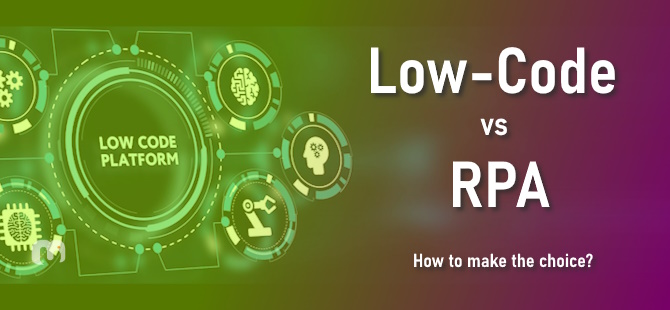
Many of my friends and colleagues often got to have this doubt. What is are the key differences between enterprise low-code platforms and enterprise RPA platforms. Which is a better choice to adapt for their business. Let us try to answer this crisply.
Both low-code enterprise platforms and RPA platforms are poised for impressive growth in the coming years, though each shine in different areas. Let’s dive into their strengths and potential challenges to see which might be the better fit for your business needs.
Low-code platforms offer incredible flexibility and scalability. They let you build anything from simple workflows to complex enterprise applications, often without needing to write a single line of code. This empowers “citizen developers” within your organization to take ownership of creating solutions, boosting agility and responsiveness. And because these platforms are designed for seamless integration with existing systems, you can quickly connect your new applications to the rest of your tech ecosystem. However, security concerns around access and data governance need careful attention, and relying heavily on a specific platform can limit your flexibility in the long run. Additionally, while pre-built components can speed up development, they might not always perfectly cater to your unique needs.
RPA platforms excel at automating repetitive tasks, delivering rapid returns on investment through immediate efficiency gains. They integrate seamlessly with existing systems without requiring code changes, making them easy to deploy and use even for non-technical users. By automating tasks prone to human error, RPA also helps improve accuracy and consistency. However, it’s important to remember that RPA’s strengths lie in handling individual, well-defined tasks. It might not be the best choice for complex processes or situations requiring intelligent decision-making. Additionally, scaling RPA beyond individual tasks can be challenging, and maintaining and updating bots as underlying systems evolve requires ongoing attention.
I also see organizations adapting hybrid approach where low-code and RPA compliment each other. There can be cases where your applications are legacy and not so easy to change or at least not so cost-effective to integrate with applications built with low-code. Or there can be cases where IT resource constraints result in automations being deprioritized, but citizen developers are available to help get things started. These kind of scenarios work great for a hybrid adaption of RPA with Low-Code. Some of the leading platform’s support both the capabilities today.
So, which technology has a brighter future for your business? The answer hinges on your specific needs and goals. If you prioritize rapid automation of repetitive tasks with minimal disruption, RPA could be the key. But if your focus lies in building comprehensive applications and empowering citizen developers, a low-code platform might be your best bet. Ultimately, the most promising path might lie in a strategic combination of both technologies, allowing you to reap the benefits of each while addressing their individual limitations.
Whether you choose low-code, RPA, or a hybrid approach, remember that these technologies are powerful tools designed to empower your business. By carefully considering your needs and leveraging their strengths responsibly, you can unlock impressive efficiency gains and propel your organization towards its goals.
In conclusion, both low-code and RPA platforms have a bright future, and the best approach might be a combination of both technologies to achieve comprehensive automation goals.
Thanks for Reading. Stay Tuned!

Look forward to connecting with you!
Finally, “subscribe” to my newsletter, so that you get notified every time when I publish.
Check out some of my videos here, and do subscribe to my channel.

